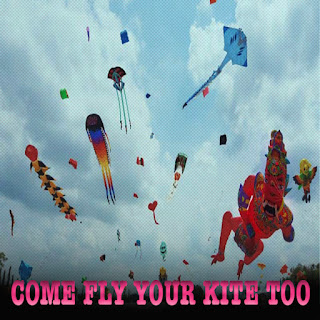Launceston's GM/CEO seems to be saying that in order to achieve 'change' in regard to the 'governance' of the QVMAG, and/or the city's cultural entities, there needs to be State Govt legislative change. However that is NOT entirely the case.
Any reasonably diligent interrogation of Tasmania's Local Govt. Act will expose various options for councils to initiate change without going cap in hand asking say the Premier to legislatively facilitate change. One will be canvased here.
Working on the assumption that the City of Launceston – that is the elected representatives – has or grants itself the 'wriggle room' to bring about change. They DO NOT need the approval of their GM/CEO but they DO need 'intestinal fortitude' to do what their constituents call upon them to do – if and when they do, if and when they are consulted in a meaningful way.
Given that there is a perception that there are non-core elements and activities of Local Govt that it cannot any longer, in a 21st C context, afford to 'own and operate'.
Nonetheless, there are long term investments in these things – specifically the QVMAG & Princess Theatre – that have sometimes been made over generation upon generation and in multiple ways, thus they are resplendent in their riches – cultural centres, festivals, etc.
The implication here is that such 'cost centres' – non income generating operations within councils – need to have their ownership held by their relative Communities of Ownership & Interest (COI) - ideally as incorporated not-for-profit community cultural enterprises – rather than the council itself.
That being the case 'the COI' might well be given the opportunity to be audacious and reimagine 'their museum and theatre' together as a not-for-profit community cultural enterprise. Given the QVMAG's established reputation as a 'Colonial History Venue' that might well lay down the foundations for an evolved 21st C community cultural enterprise. The two facilities together seem to offer enormous and as tet untapped potential.
Moving somewhat beyond that, the kananamluka Tamar Esk region is endowed with a rich heritage and a long and vibrant multidimensionl set of histories – the First Tasmanians', the British Empire's, the Antipodean Industrial histories and so on all played out in the region. In so many ways the region's cultural landscape is the fraction that represents 'the Australian whole' – the colonial whole and its aftermath.
Arguably, the region has all the attributes and infrastructure upon which to found a world class and multidimensional venture focused upon 'interpreting and interrogating histories' in audacious ways and self-sustaining ways. Likewise, such an operation working collaboratively and cooperatively with the National Trust and cultural centres Statewide would be enabled to purposefully 'tell Tasmanian stories' in multiple ways.
Speculatively, step by step, how might the option of establishing a standalone, not-for-profit incorporated community cultural enterprise be advanced and achieved?
STEP 1: In open council deliberate upon the option to 'found and auspice' a standalone, not-for-profit community culture enterprise focused on 'history making'. As a component of such a deliberation invite representations from northernTasmania's cultural producers, cultural organisations, et al specifically targeting people in the kanamaluka Tamar, Esk catchments.
STEP 2: Given that Council determines to proceed with the initiative, appoint and empower an independent 'commissioner' to:
• Establish an appropriate steering committee;• Receive and deliberated on representations from the community;
• Develop an appropriate model constitution;
• Seek and develop access arrangements to appropriate infrastructure;
• Develop and initiate an ongoing regional consultation process;
• Develop an appropriate and purposeful strategic plan;
• Secure appropriate memorandums of understandings with regional councils, regional cultural organisations; and
• Develop a funding model in consultation with regional councils, funding agencies, sponsors, corporations et al.
STEP 3: Given that Council's ratepayers and the State Government are currently the primary funders of the city's cultural infrastructure, conduct referendum or electors poll to seek community and government approval/endorsement for any standalone cultural entity/operation with access to 'public infrastructure' under equitable conditions.
STEP 4: Consistent with the above:
• Devolve ‘ownership’ of the QVMAG’s collections to the custody, care and legal ownership of the State Government; and/or• Where appropriate, in part, devolve ownership to an appropriate national collection and/or research entity in the case of scientific material; and
• Ensure that significant components of the collections are available to, and accessible to, regional scholars, researchers et al geographically located in the kanamaluka Tamar, Esk region;
• Given that in 'lore' the collections are the 'intellectual and cultural property' of Tasmanians/Australians and thus belong to the wider community generally rather than the City of Launceston.
STEP 5: Consistent with the above:
• Appoint a 'transition Board of Governance' tasked to transition the museum, art gallery, theatre and other relevant 'operations' away from their current status as a City of Launceston 'cost centre' into a standalone 'Community Cultural Enterprise'; and• Secure 'government funding, local and state' for a transitional period at approximately the current
• Do so over a defined transitional period – say up to three years;
Establish an appropriate 'membership base and structure' with citizen relationships, research associates
• Close the museum and art gallery to the public for a transitional period;
• Initiate transitional program elements in accord with available funding and sponsorships;
• Devolve ‘ownership’ of the QVMAG’s collections to the custody, care and legal ownership of the State Government; and/or other appropriate 'science collections'.
STEP 6: Consistent with the above and at the end of the designated transitional period (3 years?):
• Establish an appropriate members base for the new entity in consultation with the State government, regional local governance and key regional cultural organisations;• Appoint a 'Board of Governance' in consultation with 'members', regional local governance and State Govt.;
• Establish the entity's Strategic & Marketing Plans;
• Appoint appropriate managers and service providers; and
Open the new 'institution' in its new modus operandi.




No comments:
Post a Comment